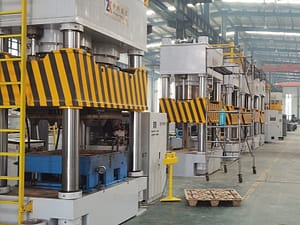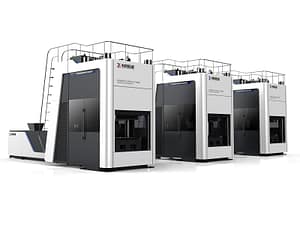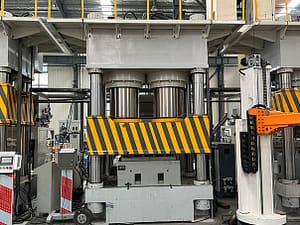Molded wood pallets are widely used in logistics and warehousing due to their durability, cost-effectiveness, and eco-friendly nature. However, several factors can influence the output of a molded wood pallet production line. Understanding these factors can help optimize production efficiency and increase overall output. Below are the key elements affecting molded wood pallet production and ways to improve efficiency.
1. Raw Material Quality and Moisture Content
The quality and type of raw materials, such as wood shavings, sawdust, and wood chips, significantly impact production. Ideally, the moisture content of raw materials for presswood pallets should be between 5% and 8%. Excess moisture can prolong drying time and reduce the strength of the final product, while overly dry materials may lead to inefficiencies in binding.
Solution:
- Use high-quality wood waste with uniform particle size, wood chips size 5mm-15mm is better.
- Maintain the optimal moisture content by using industrial dryers before molding.
Raw materials can be used to make molded pallets
2. Molding Machine Efficiency
The molding machine’s performance is crucial for determining production capacity. Factors such as pressing pressure, heating efficiency, and cycle time all contribute to the final output.
Solution:
- To ensure the pallets’ durability, choose a high-pressure molding machine with a pressing capacity of at least 1250 tons, recommend 1600 tons pressure presswood pallet machine.
- Ensure even heating (Mold temperature between 150℃-180℃) across the mold to avoid defects and ensure faster curing.
- A reliable mold temperature controller, power ≥45 kWh.
3. Mold Quality and Design
The mold used in the production line affects pallet formation’s shape, strength, and efficiency. A well-designed mold with smooth surfaces and precise dimensions leads to higher production rates and fewer defects.
Solution:
- Regularly maintain and clean molds to prevent buildup that could affect pallet quality.
- Use customized molds to optimize the design and size for specific industry requirements.
- The mold’s heat-transfer oil circuit must be designed reasonably to ensure that every part can be heated evenly.
- Ensure that the mold is carved from a single piece of steel to prevent oil leakage or deformation that may occur due to working under high temperatures and high pressure for an extended period.
- An experienced mold designer/manufacturer. PalletsBiz completely owns an experienced mold design team and a mold processing center independently. Not only do we provide molded pallet molds, but we also offer plastic pallet molds.
4. Curing and Cooling Time
After molding, the pallets need adequate curing and cooling time to achieve the required strength. If the cooling process is too short, it may result in deformation or reduced durability. (An Article about the Production Process of Molded Pallets)
Solution:
- Cool it naturally at room temperature. After leaving it for 24 hours, the strength of the pallet will reach its optimum.
5. Production Line Automation
A highly automated production line can significantly improve efficiency by reducing manual intervention and human errors. Automated feeding, molding, and stacking systems contribute to 30%-50% higher efficiency compared to semi-automated processes.
Solution:
- Invest in a fully automated production line to minimize labor costs and increase output consistency.
- Use sensors and AI-based monitoring systems to optimize production parameters in real-time.
6. Power Supply Stability
One presswood pallet will consume about 2.5-3kWh of electricity.
The stability of the power supply directly impacts production speed and consistency. Frequent power fluctuations can lead to uneven heating, machine downtime, and product defects.
Solution:
- Use a stable power source with backup generators to ensure uninterrupted production.
- Regularly inspect electrical systems to prevent power-related issues.
7. Environmental Conditions
Temperature and humidity in the production facility also affect the molding and curing process. High humidity levels can slow down drying, while extreme temperatures may impact resin bonding.
Solution:
- Maintain an ideal factory environment with humidity levels between 40%-60%.
- Use dehumidifiers and air ventilation systems to create optimal working conditions.
8. Glue Type
Glue plays a crucial role in the production process and directly affects the output of pallets.
UF/MUF: ratio 12-15%, 7-8 minutes is needed to produce one pallet.
MDI: ratio 4-5%, 4 minutes is needed to produce one pallet.
*for more information about the glue, click Follow link:
Glue for Presswood Pallet Production: Comparing UF, MUF, and MDI Adhesives
Conclusion
To maximize the output of a molded wood pallet production line, manufacturers must optimize raw material preparation, invest in high-efficiency molding machines, and ensure proper automation and environmental control. By addressing these factors, businesses can increase production efficiency by up to 40%, reduce waste, and improve overall product quality.
If you’re looking for high-performance molded pallet production equipment, feel free to contact us for expert guidance and customized solutions!



